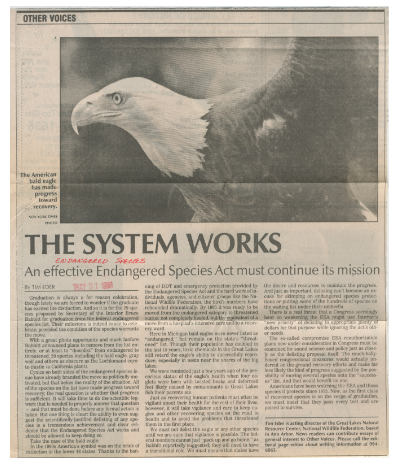The Endangered Species Act of 1973
What the ESA Does
The Endangered Species Act of 1973 gave power to the government to enforce species protection. The Secretary of Commerce/Interior determined what species would be placed on the endangered species list based on current events and circumstances. The list itself includes the species' scientific name, common name, species group, federal listing status, and where it's found.
"Various species of fish, wildlife, and plants in the United States have
been rendered extinct as a consequence of economic growth and development untempered by adequate concern and conservation;"
~ The Endangered Species Act of 1973
The ESA's Power
The ESA gives the national government power over the states, allowing a national effort to be implemented, better protecting animals. The ESA also includes restrictions and bans on species movement and transportation in an effort to keep endangered species in their original habitat. Furthermore, the ESA has punishments in place for the destruction of endangered species' habitats.
The ESA's Conflict
While attempting to create safe, healthy environments where species' populations can rebound, there are some difficulties. Businesses involved in mining or logging may have to change their location or approach to avoid violating the ESA. Native Americans can also come into conflict with the ESA for hunting endangered species. This can create messy legal situations.
The ESA's Support
Despite some conflict, much of the public supported the bipartisan act due to strong environmental awareness prompted by activists like Rachel Carson and decreasing animal populations such as the bald eagle.
